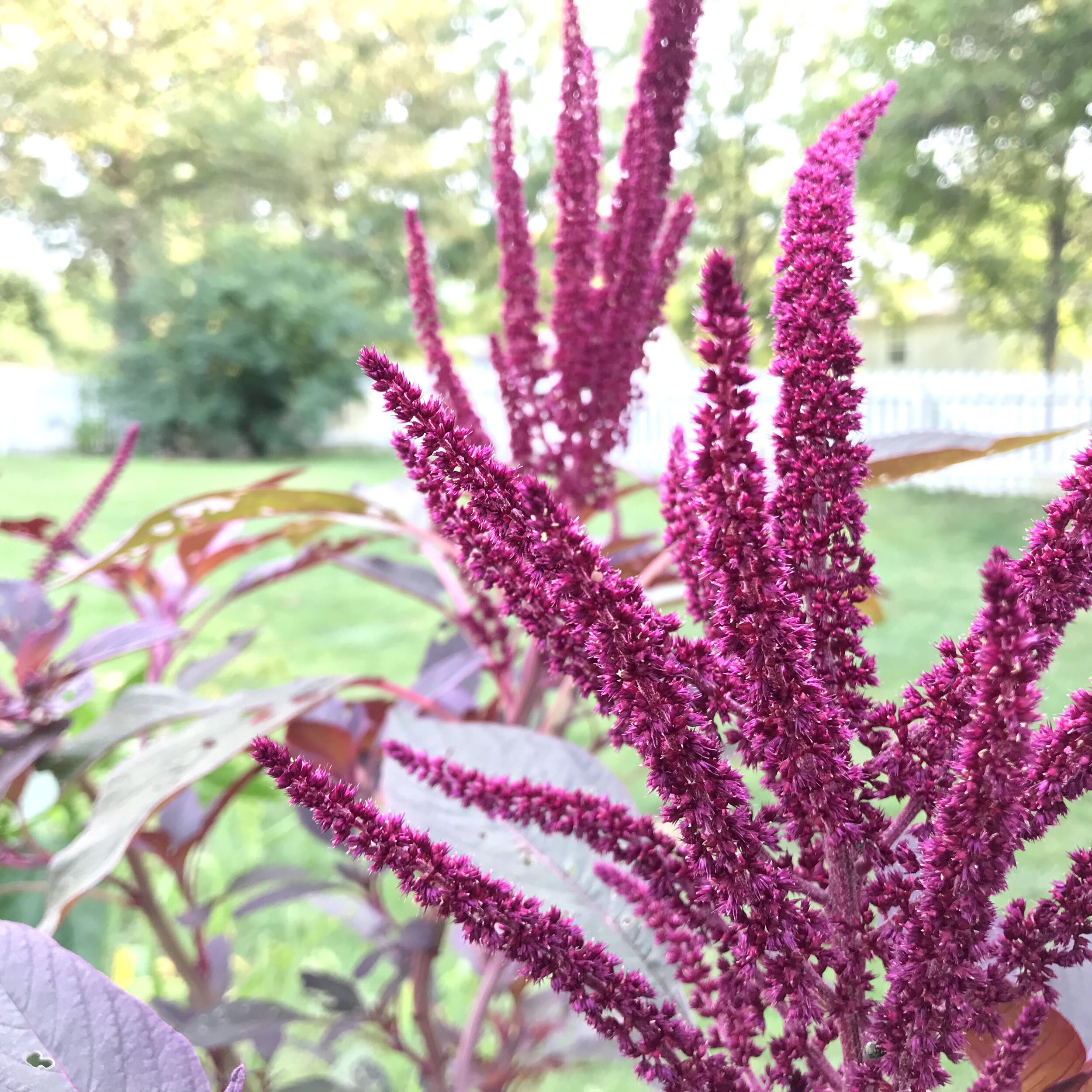Botanical spotlight—Amaranth
Chase Kempinski, PhD (chase@tritera.co)
One of the Tritera blog goals is to continue highlighting interesting science topics that tie into skincare and overall well being. These ideas will usually be summarized in an Instagram post and go into much more detail here. This post will focus on a fascinating genus of plants which some of the species you probably have seen as part of a bouquet or in a garden and may have occasionally eaten, but were not fully aware of its rich history—Amaranth.
Amaranthus crudentus, variety “Red Spike”. Seeds are available here.
Amaranth is an annual species of flowering plant that produces a small seed which, while not a true grain, generally functions as one for culinary purposes. Various species exist throughout the world and some are favored for their ornamental beauty and as a foodstuff (both the leaves and the seed). Certain species are notoriously invasive and pose problems for modern agriculture. Amaranthus palmeri (Palmer Amaranth, pigweed) is the best-known example, which can cause reductions in yields of up to 91% for corn and 79% in soybeans, and is becoming increasingly resistant to herbicides (1). Amaranthus uses the C4 carbon-fixing mechanism in photosynthesis, meaning that it is well-adapted to deal with drier climates (i.e. less available water).
Although the genus has species which grow around the world, it was truly a cornerstone of culture in the pre-European contact Americas. Considered a “forgotten crop” in Western society, Amaranth held significant dietary and cultural roles for indigenous peoples of both North and South America. In Aztec society, it was an important food crop that also held wider importance. The seeds were used to make doughs, which had special roles in various religious rituals and important life events (e.g. the birth of a son) (2). Due to its unfamiliarity and association with non-Christian religious customs, the Spanish sought to remove Amaranth from the indigenous societies during their colonization and Westernization of the native people.
Although there are many species of Amaranth, there are three primary species that are cultivated: A. hypochondriacus, A. cruentus, and A. caudatus (3). A. caudatus in agriculture was most associated with South America and Andean culture. It is also the species which includes the popular ornamental variety, love-lies-bleeding (4). A. hypochondriacus and cruentus were more associated with Mesoamerica, including Aztec culture (5).
Bowl of Amaranth seeds. Note their small size.
Some varieties of A. hypochondriacus can grow several meters tall while those of A. cruentus are usually between 1-2 meters. There are differences in the flower structures as well, with A. cruentus and caudatus being more apt to bend or droop (5).
Like spinach, the leaves are edible, have a similar taste, and the younger leaves are generally favored. The seeds can be made into a flour or prepared like quinoa. The seeds are incredibly nutritious, providing high amounts of unsaturated fatty acids and high levels of protein (3). The seeds are very small, being about 1-2 mm in diameter.
Especially interesting for skin care are the amounts of squalene in Amaranth seeds. Amaranth has one of the highest known amounts of squalene in any plant tissue. Across the three common species discussed, squalene amounts can vary depending on variety and growing conditions but generally range from 2-7% (20-70 mg/g seed) (3). Putting this in perspective, olive oil—from where Tritera obtains its squalene—contains about 0.15-0.17% (1.5-1.7 mg/g oil) squalene (6).
As we go forward, we plan on incorporating Amaranth seed oil into some of our products.
References
1. M. M. Bomhardner, Palmer amaranth, the king of weeds, cripples new herbicides. Chem. Eng. News 97 (2019).
2. S. Coe, D., America’s First Cuisines, First Edit (University of Texas Press, 1994).
3. P. R. Venskutonis, P. Kraujalis, Nutritional Components of Amaranth Seeds and Vegetables: A Review on Composition, Properties, and Uses. Compr. Rev. Food Sci. Food Saf. 12, 381–412 (2013).
4. A. Mújica, “Andean grains and legumes” in Neglected Crops: 1492 from a Different Perspective, 1st Ed., J. E. Hernández Bermejo, J. León, Eds. (UN FAO, 1994), pp. 131–148.
5. G. A. Itúrbide, M. Gispert, “Grain amaranths (Amaranthus spp.)” in Neglected Crops: 1492 from a Different Perspective, 1st Ed., J. E. Hernández Bermejo, J. León, Eds. (UN FAO, 1994), pp. 93–101.
6. O. Popa, N. E. Băbeanu, I. Popa, S. Niță, C. E. Dinu-Pârvu, Methods for Obtaining and Determination of Squalene from Natural Sources. Biomed Res. Int. 2015, 1–16 (2015).


